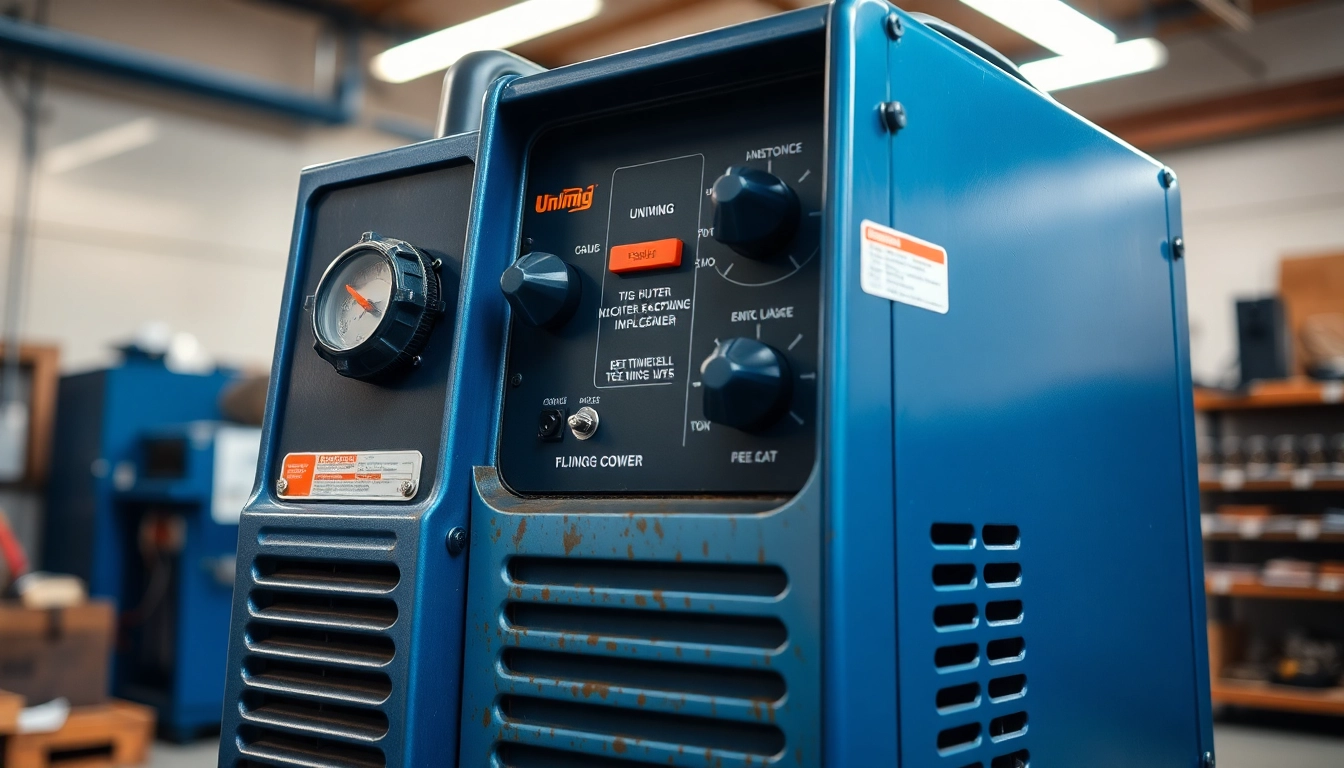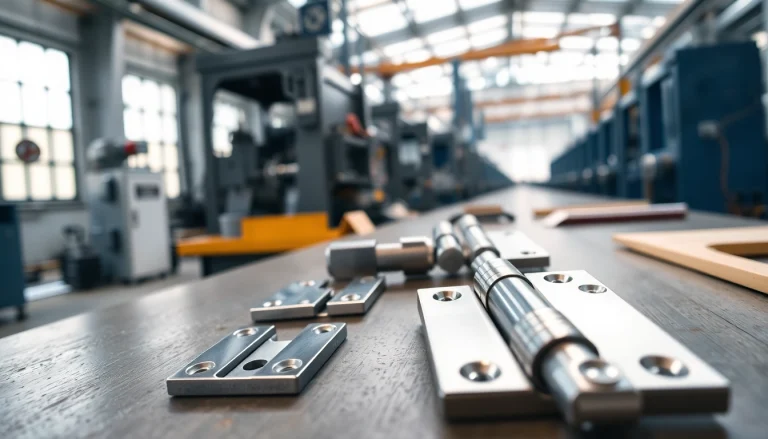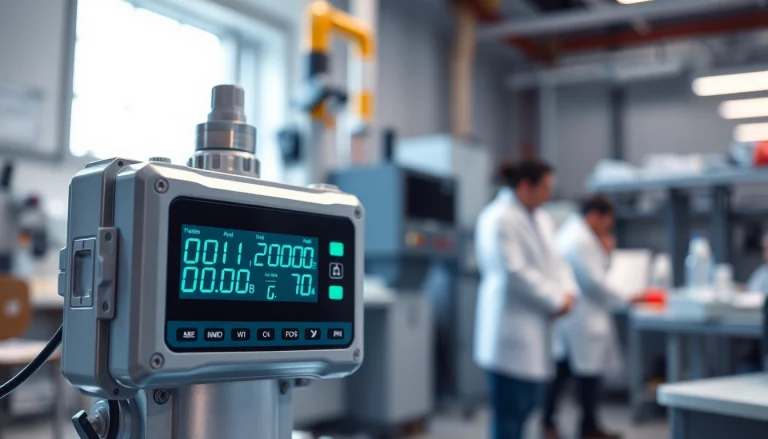
Understanding Unimig TIG Welders
What is a Unimig TIG Welder?
A unimig tig welder is a specialized welding machine designed primarily for Tungsten Inert Gas (TIG) welding, which is preferred among metal fabricators for its precision and control. Known for their versatility and ability to weld various materials with high levels of quality and cleanliness, Unimig TIG welders can handle both AC and DC processes, making them suitable for welding aluminum, stainless steel, and other metals. These machines utilize non-consumable tungsten electrodes, which allows for a cleaner weld with minimal spatter.
Key Features of Unimig TIG Welders
Unimig TIG welders are equipped with several innovative features that elevate the welding experience, including:
- Advanced Inverter Technology: This ensures consistent and efficient power output, leading to higher quality welds.
- AC/DC Functionality: Ideal for a range of materials, allowing users to weld both ferrous and non-ferrous metals.
- HF Start: High-frequency arc ignition enables a stable and reliable arc initiation.
- Variable Amperage Control: This allows users to adjust the heat settings for precise welding applications.
- Lightweight Portable Design: Most models are designed for ease of transportation, aiming to facilitate onsite projects.
Benefits of Using a Unimig TIG Welder
The advantages of selecting a Unimig TIG welder are significant, especially for professionals and hobbyists seeking quality and efficiency:
- Enhanced Weld Quality: The ability to control the heat input allows for clean welds with minimal impurities.
- Versatility: Suitable for a variety of materials, such as aluminum, stainless steel, and mild steel.
- Reduced Cleanup Requirements: Less spatter means less time spent on post-weld cleanup.
- Accessible to Both Beginners and Experts: With varied settings and configurations, both novice and experienced welders can adapt their techniques accordingly.
Popular Models of Unimig TIG Welders
Viper Series Overview
The Viper series of Unimig TIG welders is particularly popular among DIY enthusiasts and professionals. These welders are designed to be user-friendly while offering effective features for high-quality welding.
Notable models include:
- Viper TIG 180 AC/DC: A compact yet powerful machine suited for a variety of welding applications.
- Viper 185: Known for its advanced inverter technology, this model provides excellent arc stability and low spatter.
- Viper Multi 195: This model integrates MIG and TIG welding capabilities, appealing to users needing flexibility.
Razor Series Overview
The Razor range is aimed at professionals requiring robust performance for industrial applications. The build quality and features cater to more demanding tasks.
Key models include:
- Razor TIG 200 AC/DC: Equipped with a wide range of features including multiple modes, it is favored for aluminum and stainless steel fabrication.
- Razor TIG 220 DC: Powerful enough for heavy fabrication work without compromising on ease of use.
Comparison of Unimig Models
When comparing the Viper and Razor series, several factors emerge that help users decide which model best fits their needs:
| Feature | Viper Series | Razor Series |
|---|---|---|
| User Level | Beginner to Intermediate | Advanced to Professional |
| Types of Metal | Aluminum, Steel | All Types Including Heavy Fabrication |
| Weight & Portability | Lightweight | Heavier, less portable |
| Price Range | Affordable | Higher End |
How to Choose the Right Unimig TIG Welder
Factors to Consider for Your Needs
Choosing the right Unimig TIG welder involves evaluating several key factors:
- Welding Material: Consider what type of metal you will be welding most frequently.
- Welder’s Skill Level: Beginners should lean towards more user-friendly models, while experienced welders may prefer advanced features.
- Power Supply: Ensure compatibility with your workshop’s power supply specifications to avoid performance issues.
Professional vs. Hobbyist: Making the Right Choice
Hobbyists might prioritize models that are easier to use and more affordable, such as those from the Viper series. In comparison, professionals may opt for the Razor series which provides enhanced capabilities suitable for more complex jobs.
Additionally, professionals may need extra features like dual voltage compatibility or advanced AC frequency settings found in higher-end models.
Budget Considerations for Unimig TIG Welders
Your budget will play a significant role in determining which Unimig model is appropriate for you:
- Entry-Level (<$1,000): Expect features suitable for light fabrication and repair tasks.
- Mid-Range ($1,000 – $2,000): More versatile options, better for a range of different metals.
- Professional Grade (>$2,000): Advanced features and capabilities, ideal for intensive industrial applications.
Tips for Operating a Unimig TIG Welder Effectively
Preparing Your Workspace
A clean, organized workspace is crucial for successful welding. Ensure that your work area is free from flammable materials, has adequate ventilation, and provides good lighting. Consider using a welding table to stabilize your workpiece.
Setting Up the Welder: A Step-by-Step Guide
- Ensure the welder is positioned in a stable location.
- Setup and connect the gas supply, ensuring all connections are leak-free.
- Install the tungsten electrode and set the appropriate gap according to the thickness of the metal being welded.
- Set the welder’s parameters, including the current, polarity, and gas flow.
- Conduct a test weld on scrap material to ensure settings are correct.
Welding Techniques for Optimal Results
To achieve the best results when welding with a Unimig TIG welder, consider the following techniques:
- Maintain a Consistent Travel Speed: This will prevent overheating and distortion of the metal.
- Use the Right Rod Angle: A 15-degree angle in the direction of travel tends to yield optimal results.
- Monitor Heat Input: Ensure you do not exceed the materials’ temperature tolerance to avoid burn-through.
- Practice Your Technique: Regular practice on different metals creates better muscle memory.
Maintenance and Care for Your Unimig TIG Welder
Routine Maintenance Checks
Consistent maintenance prolongs the life and optimizes the performance of your Unimig TIG welder. Here are some key maintenance tasks to undertake:
- Check and replace the tungsten electrode as required, ensuring a proper tip shape.
- Inspect gas hoses and regulators for wear or damage.
- Keep the cooling fan and air intake clean by removing dust and debris.
- Store the welder in a dry place to prevent moisture-related issues.
Troubleshooting Common Issues
Even the best equipment can experience issues. Here are some common problems and potential solutions:
- Inconsistent Arc: This may indicate a worn electrode, incorrect gas flow, or improper amperage settings.
- Excessive Spatter: Ensure the correct settings and clean metal surfaces prior to welding.
- Overheating: Check for adequate cooling and airflow, and ensure correct amperage settings based on the material thickness.
Long-term Care Tips to Enhance Performance
For longevity and reliable performance, consider the following:
- Adhere to the manufacturer’s guidelines for usage and storage.
- Keep a maintenance log to track service intervals and past issues.
- Invest in seasonal checks by a professional to ensure optimal functionality.
- Utilize original parts when replacements are necessary to maintain performance integrity.






